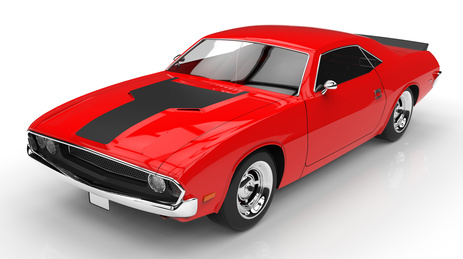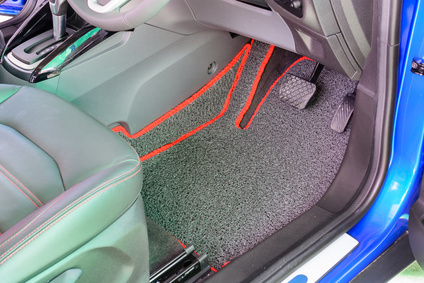 The carpet in classic cars is the brunt of considerable abuse — especially in the front seats. When you’re restoring your classic car, one of first cosmetic decisions you’ll have to make is whether it’s wiser to repair or replace your vehicle’s carpet.
The carpet in classic cars is the brunt of considerable abuse — especially in the front seats. When you’re restoring your classic car, one of first cosmetic decisions you’ll have to make is whether it’s wiser to repair or replace your vehicle’s carpet.
Carpet Restoration
Restoring an older carpet can be the right move if you want to retain the original look and feel of the vehicle, while also containing costs. Here are some steps:

- After removing the carpet, lay it out and give it a thorough inspection to spot holes and severely worn areas. Do this outside to keep dust out of the shop and avoid exposure to chemicals which were used during installation, likely long before the EPA mandated safety protocols.
- Lightly vacuum the carpet to remove large clumps of dirt. But proceed with caution so you don’t damage the lining or surface of the rug. Do some “old school” cleaning, hanging it and hitting it with a stick.
- Use bottled carpet cleaner and work it into fibers with a soft bristled brush. The brush should help restore the pile.
- Vacuum again to remove moisture and dirt that came loose while you brushed.

- Carefully use a heat gun to remove extra fibers or “bearding,” for a smooth, professional look.
- Spray fabric paint evenly over the entire surface (while wearing a respirator). Make sure you evenly apply paint. An inexpensive fix, painting or dying the carpets may provide a stop-gap until you are able to find replacement carpet.
- Buy pressure sensitive adhesive backing that will stick to the bottom of the vehicle while also serving to insulate the floor from the hot exhaust system underneath.
Carpet Installation
For some restorations, the original carpet might be too far gone. Whether it’s rotted through, torn or threadbare, some car carpet is simply not worth saving. But consider the positive to this; thick new carpeting could help reduce road noise and is more efficient at retaining heat – an important consideration for older vehicles without air conditioning or efficient heating systems.
Buying and installing new carpeting will give your restoration a great professional look – as long it’s done right. Here are seven tips to help:
- Buy custom-fit carpet. You will want two sections of carpeting (front and rear) that are heat molded to the contours of the car. Heat molded carpet is “pre-shaped” to fit.
- Take the seats out completely so you can work the carpet around seat brackets. Vacuum the now exposed areas to remove food and other debris.
- Pull out the old carpeting, taking plenty of time to look for rust. Remove the underlayment and let it dry for a few days. Use the original underlayment with the new carpet unless it’s overly soiled.
- Install the new carpet, being careful to avoid ripping it as you go. If you don’t want the job to look like it was done by an amateur, pay attention to details. Don’t cut too close to the gearshift. Measure twice, cut once.
- To start, nail down the carpet in a few spots to prevent shifting, ideally in the seat stud location.
- Carefully adjust the carpet around sill plates and other trim pieces.
- Do a final check before bolting the seats back into place.

Need expert assistance for your classic car’s interior? Talk to the experts at C&L Auto Body. C&L Auto Body provides customers in and around Covina, California with expert collision repair and classic car restoration services. The friendly staff at C&L Auto Body offer a free loaner car to customers as well as advice on completing the insurance claims process.



